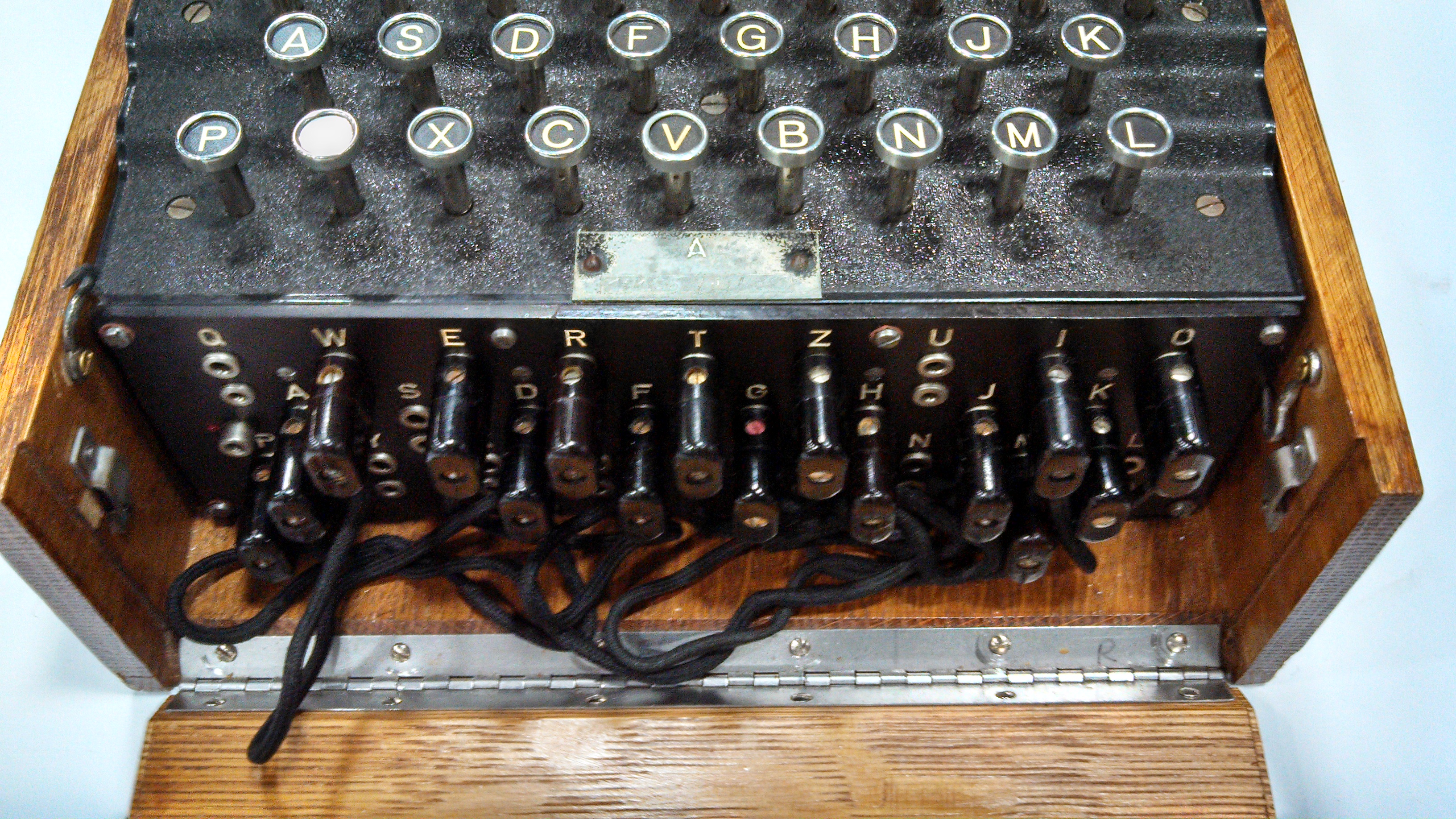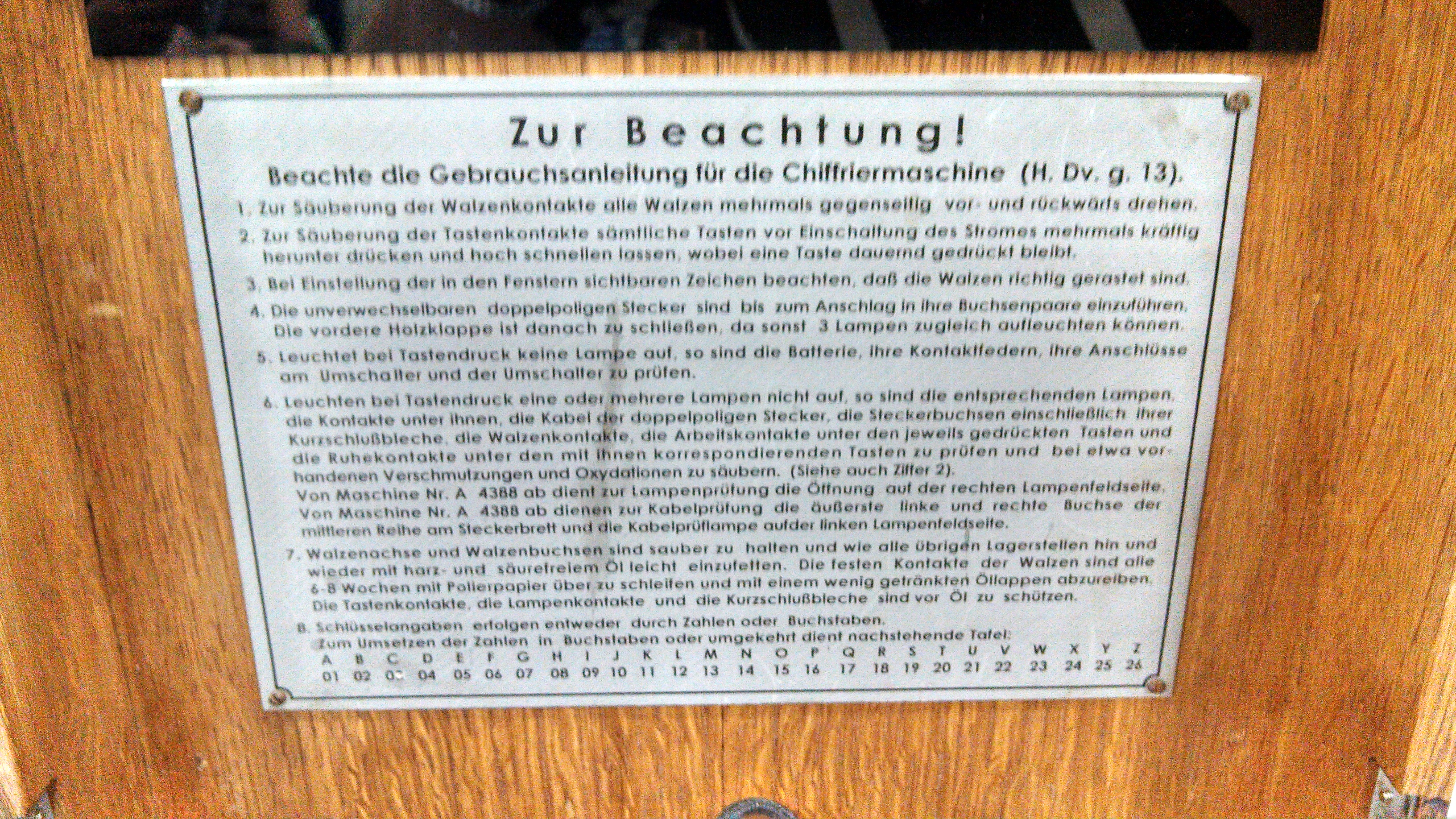Tuesday, January 15. Welcome back! Today we did a quick overview of some of the key mathematical ingredients for the course, namely groups and combinatorics.
-
As always, a good place to start is Wikipedia's group theory entry. A wonderful example is the Rubik's cube.
-
The key combinatorial item was the binomial coefficient (a key application is the binomial theorem, which is related to Pascal's triangle). We also saw the factorial function (and the double factorial function). There's a beautiful theory that allows us to approximate n! quite well for n large, which leads to Stirling's formula.
-
We saw the method of storytelling was very powerful, and allowed us to solve some hard combinatorial problems quickly. Try the following: Show \( \sum_{k=0}^n \left({n \atop k} \right) \left( {n \atop n-k} \right) \ = \ \left( {2n \atop n}\right)\).
-
Here are some good handouts on the Enigma / Ultra, as well as WWII:
-
http://www.nsa.gov/about/cryptologic_heritage/center_crypt_history/publications/wwii.shtml
-
Solving the Enigma: http://www.nsa.gov/about/_files/cryptologic_heritage/publications/wwii/solving_enigma.pdf
-
The mathematics of the Enigma: http://www.nsa.gov/about/_files/cryptologic_heritage/publications/wwii/engima_cryptographic_mathematics.pdf
-
Midway: http://www.nsa.gov/about/cryptologic_heritage/center_crypt_history/publications/battle_midway.shtml
-
How mathematicians helped win the war: http://www.nsa.gov/about/cryptologic_heritage/center_crypt_history/publications/how_math_helped_win.shtml
-
-
-
Finally, here are some pics of me with an Enigma machine:
-
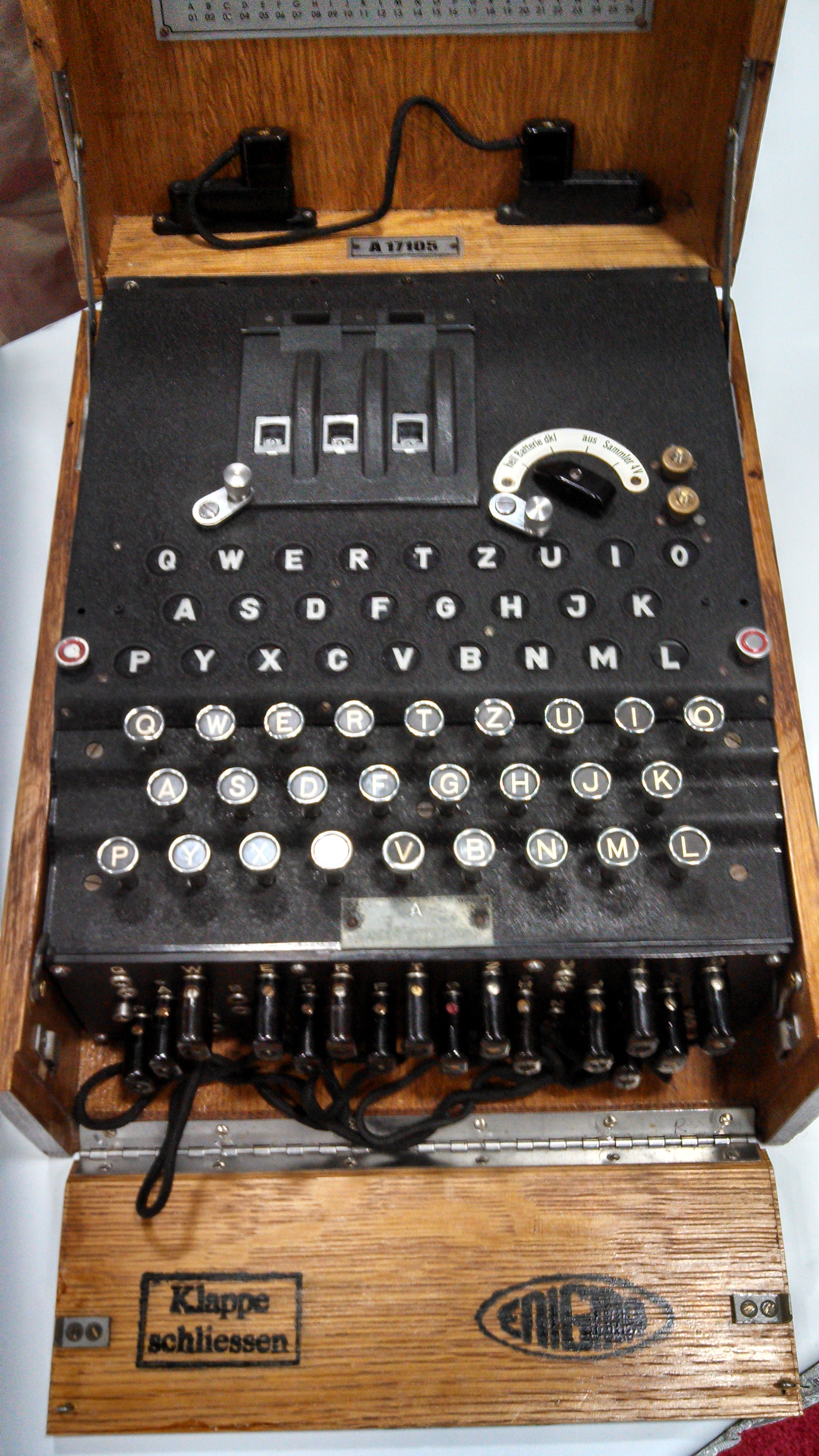
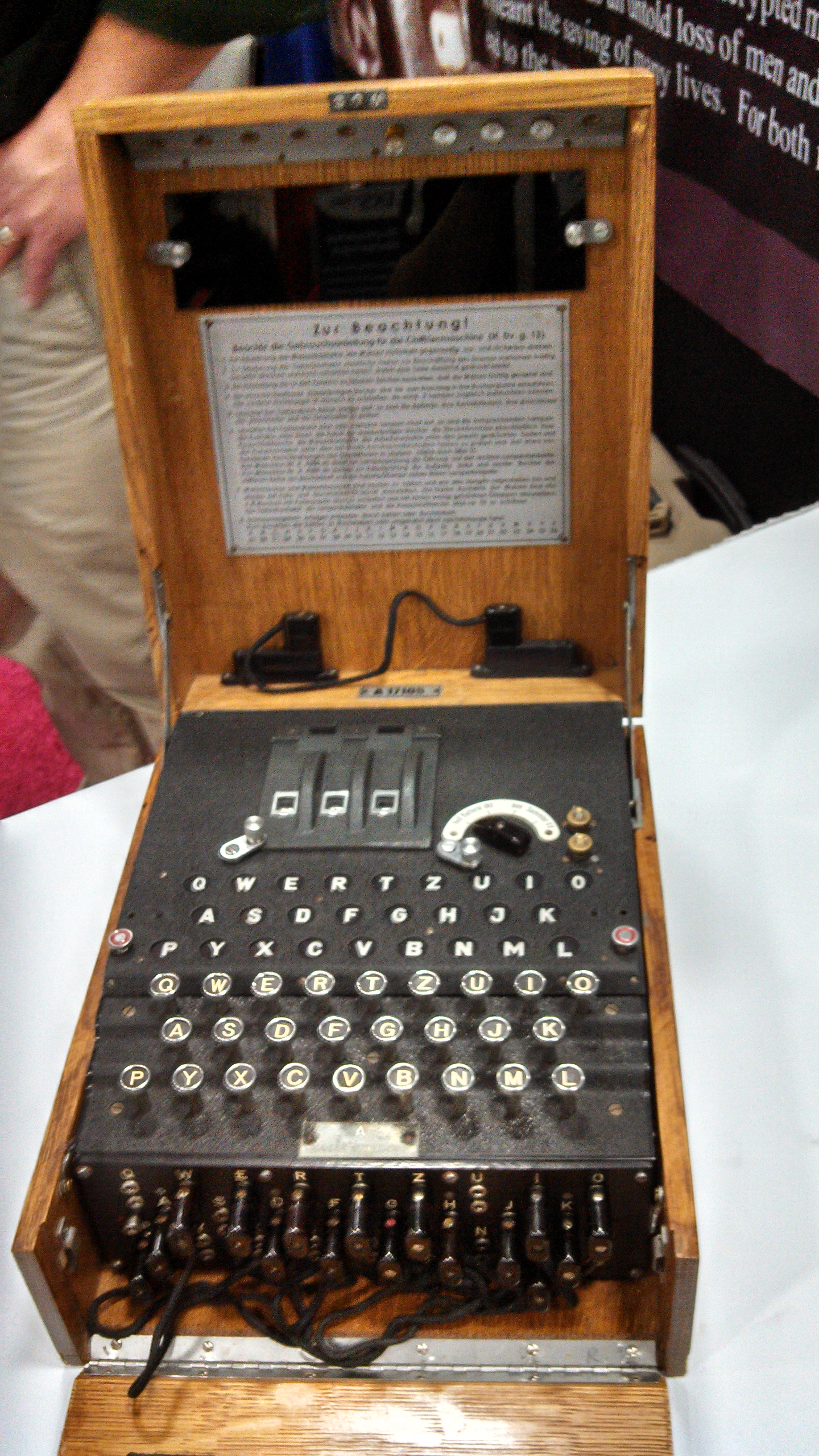
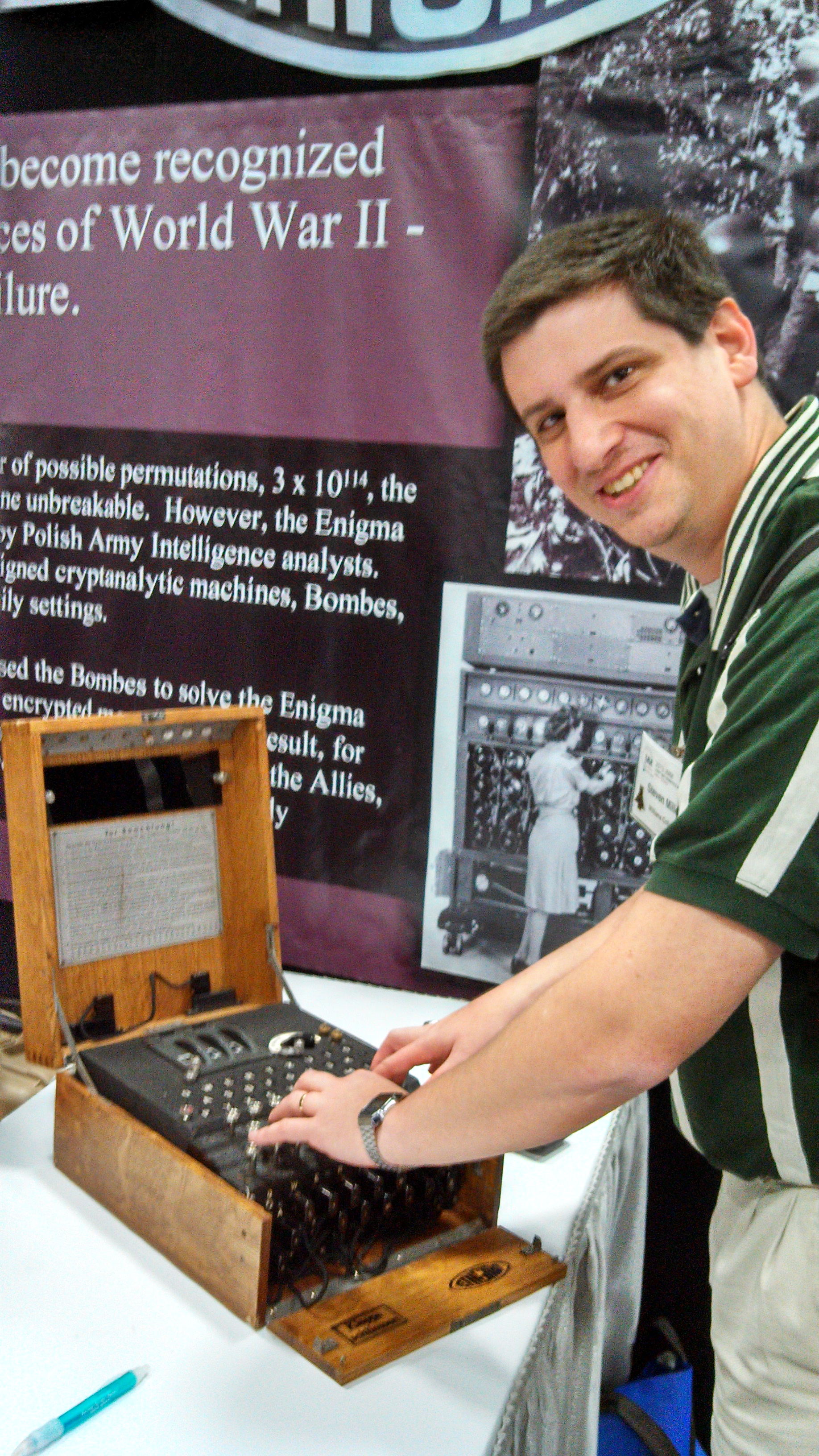
-
